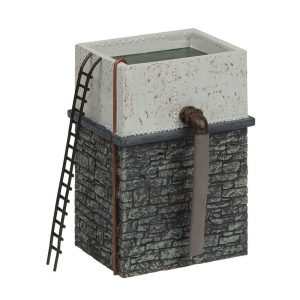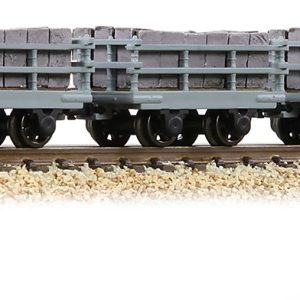Description
The ‘Jinty’ is a timeless classic and we are delighted to welcome this LMS workhorse back to the Bachmann Branchline OO scale range with this model of preserved locomotive No. 47406 in BR Black with Early Emblem. Taking advantage of the technical upgrades undertaken to the popular Branchline model a few years ago, the ‘Jinty’ combines a powerful 3 pole motor with a Next18 DCC decoder socket and has space for a speaker for those wishing to add sound.
The Bachmann Branchline model combines a chassis that is sure to provide smooth and powerful running and which is detailed with brake blocks, brake rigging, sandboxes and sandpipes, with a high fidelity bodyshell that is mounted to a diecast running plate. The model is adorned with numerous separately-fitted detail parts including the handrails, lamp irons and vacuum pipes, whilst the safety valves are also separate additions and are of metal construction. Inside the cab a detailed boiler back-head can be found, decorated to the same high standard as the exterior of the model with its exquisite livery application using authentic colours, logos and fonts.
MODEL FEATURES:
- Bachmann Branchline OO Scale
- Era 4
- Locomotive is Preserved
- Pristine BR Black (Early Emblem) livery
- Running No. 47406
- Running Plate-mounted Sandbox Fillers, accessed via the Water Tank Keyholes
- NEM Coupling Pockets
- Sprung Buffers
- Powerful 3 Pole Motor
- Equipped with a Next18 DCC Decoder Socket – Recommend Decoder item No. 36-567A
- Length 127mm
CLASS 3F ‘JINTY’ HISTORY
The origins of the ‘Jinty’ can be traced back to the Midland Railway’s Chief Mechanical Engineer (CME) S.W. Johnson and his 2441 Class locomotive. After the formation of the London Midland & Scottish Railway (LMS), Sir Henry Fowler, deputy CME of the LMS at the time, took the 2441 Class design and added a Belpaire firebox and improved cab, creating the ultimate development of the Midland Railway’s six-coupled tank engines. A total of 422 ‘Jinties’ were built from 1924 until 1931 with production spread between the LMS and various sub-contractors. The locomotives were versatile, at home shunting in stations, yards, and exchange sidings as well as on trip workings. They could also be found on passenger services and seven saw service on the Somerset & Dorset Railway until 1930 when they were absorbed back into LMS stock. The entire Class survived to Nationalisation, with the first withdrawals in 1959 brought about by the introduction of new diesel shunters. Soon, more and more locomotives were withdrawn and by 1964 less than half remained in traffic. The final examples were withdrawn in 1967, however nine have been preserved.






